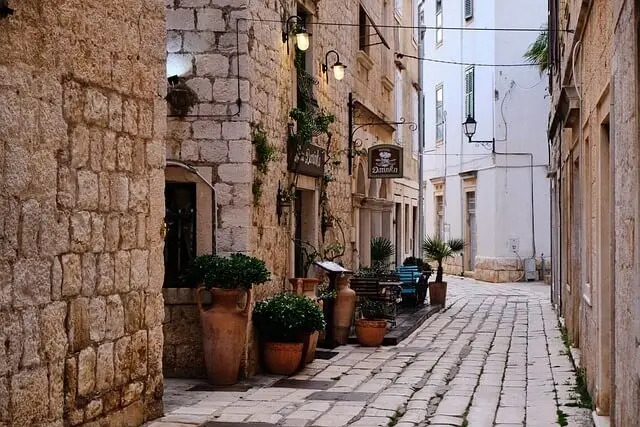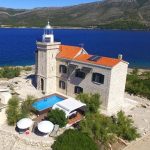Some countries are pointed out more frequently as linguistic mosaics, while others have yet to garner such recognition. For example, most Spaniards would likely agree that anyone who visits Barcelona and fails to embrace the Catalan ethos has not fully captured the essence of their destination. The same could be said about the Welsh in Cardiff or Breton in the French city of Rennes. While it may not receive the same attention, Croatia is no exception to this rule of multiplicity. Home to a plethora of unique ethnic and linguistic minorities, each with their own historical and cultural origins, Croatia is a destination where visitors will benefit significantly from putting effort into scratching beyond the surface. As more and more people act on their desires to explore and discover, cultural awareness is becoming an increasingly valuable tool in the traveller’s skill set. So, to make cultivating this vagabond essential a little easier, I have put together a list including three of Croatia’s largest minority groups by population. This catalogue is far from complete, but I hope it will wet the palate of those looking to dive deeper into Croatia’s beautiful and surprising diversity.
Serbians
The relationship between Croats and Serbs extends back centuries. The two groups have coexisted in towns and villages throughout the Western Balkans since the fall of the Roman Empire, an epoch when both peoples were establishing themselves in the region. Comprising just over 4% of the total population, Serbs are the most numerous ethnic minority in Croatia. Similarly, Croats maintain a similar status in the neighboring republic. Given their cultural, linguistic, and historical ties, it is no surprise that ethnic Serbians within Croatia has much in common with the local majority.
Despite the parallels, several notable differences exist, which may be almost redundant to outline on this platform. So, I will keep it brief. Religion is pointed out most often as a significant difference between Croats and Serbs. Serbians are majority Eastern Orthodox by tradition, and Croatians are Catholic. Moreover, Cyrillic script is standard and employed by those writing in the Serbian variant of the language. On the other hand, Croatia uses the Latin script, making an already challenging language a little simpler for those of us who speak English, Spanish, or German as our mother tongue.
Beyond these somewhat superficial distinctions, the Croatian-Serbian relationship contains deeper, more far-reaching nuances. I would advise anyone considering a holiday in Southeastern Europe to do their homework. As you may already know, the history of Croatia is dense, convoluted, and filled with many thorny spots that have influenced the psyche of many of the country’s current inhabitants. It is best to approach specific topics with respect and be culturally aware. Topics such as the Homeland War and Yugoslavia are excellent examples of such cases. That said, do not shy away from a conversation inspired by genuine curiosity. Many locals are willing to discuss history with curious tourists. Just be respectful and prepared to receive an ear-full of opinions.
Italians
One only needs to visit the colosseum at Pula to know that Italians have made a home in Croatia since antiquity. The Italian ethnic minority of modern Croatia is small, comprising only around 20,000 people or less than 0.5% of the total population. Despite these low figures, the Italian influence along Croatia’s notoriously stunning coastal regions is apparent. The Italians of Croatia are descendants of Romanized Illyrians and transplants from the empires that later ensued.
Venice ruled over much of Dalmatia and Istria for nearly 400 years, leaving a mark on these territories that still stands the test of time. Many of the cities and islands which litter cruise itineraries, and travel blogs worldwide actually have a second Italian name, a testament to the varied history of these settlements. Think of cities like Spalato (Split), Ragusa (Dubrovnik), and Zara (Zadar). In fact, Fiume (Rijeka) is a direct translation meaning river in both languages.
While the Italian population is modest, it was once more pronounced, comprising substantial proportions of essential centers in Istria and Dalmatia. Two massive exoduses occurred in the aftermath of both WWI and WWII, which resulted in the drastic reduction of the Italian population. Enthusiastic tourists should pay attention when traversing the villages, towns, and cities that dot the eastern Adriatic. A short history lesson will go a long way, providing new insights into the monuments, architecture, and people that coalesce to provide one of the most iconic destinations of the 21st century.
Hungarians
Much like the previous entry, Croatia’s Hungarian minority is a direct result of human migration and the rise and fall of empires. With approximately 14,000 individuals, ethnic Hungarians only make up less than 0.4% of Croatia’s total population, residing predominantly in communities near the Hungarian and Serbian borders to the east. Hungary and Croatia share a long relationship that extends back to the 11th century when the former proclaimed sovereignty over the Kingdom of Croatia. This union persisted until 1918, leaving plenty of time for people to move and blend across the borders we recognize today.
Those with a Hungarian connection may find interest in visiting municipalities like Kneževi Vinogradi and Bilje, where Hungarians constitute nearly a third of the local population. Similar ethnic minorities live in surrounding Romania, Slovakia, Serbia, and Slovenia, showing visitors that Magyar magnificence doesn’t stop at Budapest.
For more, make sure to check out our lifestyle section.










